The ancient city of Pereslavl-Zalessky was founded by Yuri Dolgoruky in the middle of the 12th century. The city is spread out on the shores of the picturesque Lake Pleshcheyevo among the endless forests and fields of the Russian Plain. This place breathes history, every inch of the earth has absorbed so many significant events that sometimes it seems that it is ready to tell every traveler about them.
Pereslavl-Zalessky is a protected area of ancient temples and monasteries, a city that remembers the great Russian princes who created the history of our state. Of the more modern sights, one can note an incredible number of small private museums with original expositions dedicated to everything in the world: irons, sewing machines, electronics, kettles, interior items of a peasant hut.
What to see and where to go in Pereslavl-Zalessky?
The most interesting and beautiful places for walking. Photos and a short description.
- Lake Pleshcheyevo
- Pereslavl Museum-Reserve
- Transfiguration Cathedral
- Vladimirsky Cathedral and Alexander Nevsky Church
- Church of Peter the Metropolitan
- Church of the Forty Martyrs
- Nikolsky Monastery
- Nikitsky monastery
- Holy Trinity Danilov Monastery
- Feodorovsky Monastery
- Museum-estate Boat of Peter I
- Pereslavl Railway Museum
- Iron museum
- Museum House of the teapot
- Museum of Peasant Design Horse in a Coat
- Radio Museum
- Museum of Old Sewing Machines
- Museum of Alexander Nevsky
- Museum of cunning and ingenuity
- Russian Park
- House of Berendey
- Museum The Birth of a Fairy Tale
- Pereslavl Dendrological Garden
- Blue stone
- Alexandrova mountain
Lake Pleshcheyevo
The reservoir is considered one of the most beautiful in Central Russia; it is a natural landmark of the Golden Ring route. Pereslavl-Zalessky stands on its southeastern shore, and smaller settlements are also located along the perimeter. Around the lake there are many tourist bases and hotels where people come to fish, relax in nature or go kitesurfing.
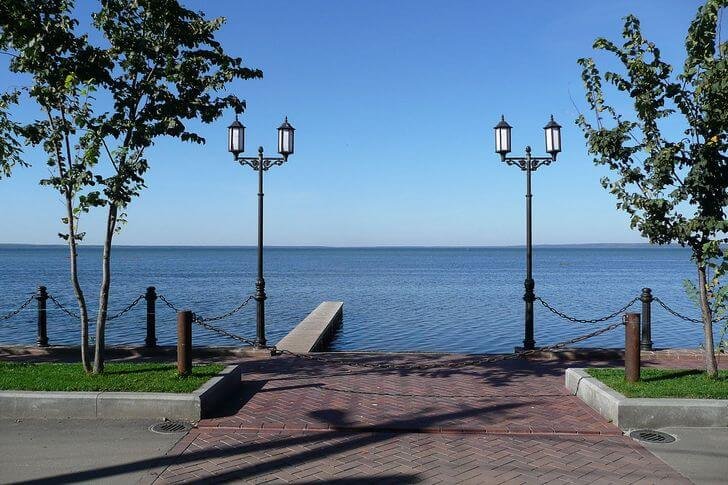
Pereslavl Museum-Reserve
Museum expositions occupy the premises of the Goritsky Monastery, which was abolished in the middle of the 18th century. Its structure includes the main building, an art gallery, the Transfiguration Cathedral, the Boat of Peter the Great, the Ganshin Estate Museum and an exhibition hall in Pereslavl-Zalessky. The exhibition areas feature icon painting, painting, wooden sculpture, as well as a variety of historical expositions.

Transfiguration Cathedral
An ancient Orthodox church, which was founded in the middle of the XII century by Yuri Dolgoruky (later Alexander Nevsky was baptized here). It is a cross-domed building with three apses and a single dome - one of the earliest monuments of church stone architecture of North-Eastern Rus'. The original painting has been lost, today there are white walls inside the cathedral. Here, a valuable icon of the 15th century "Transfiguration" was discovered, which was moved to the Tretyakov Gallery for storage.
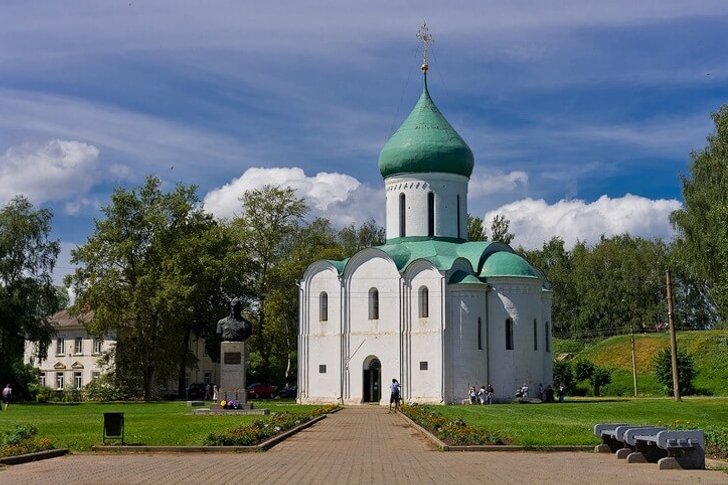
Vladimirsky Cathedral and Alexander Nevsky Church
Both temples are located in the central part of the city. They were erected in the middle of the 18th century at the expense of a local merchant on the territory where the Novodevichy Bogoroditsko-Sretensky Monastery was previously located. Inside the churches there were valuable icons of the 16th century, precious tabernacles and other utensils, but in 1925 all the property was removed. In the 1930s, after closing, the buildings were used as bakery workshops until their architectural value was recognized in 1936.
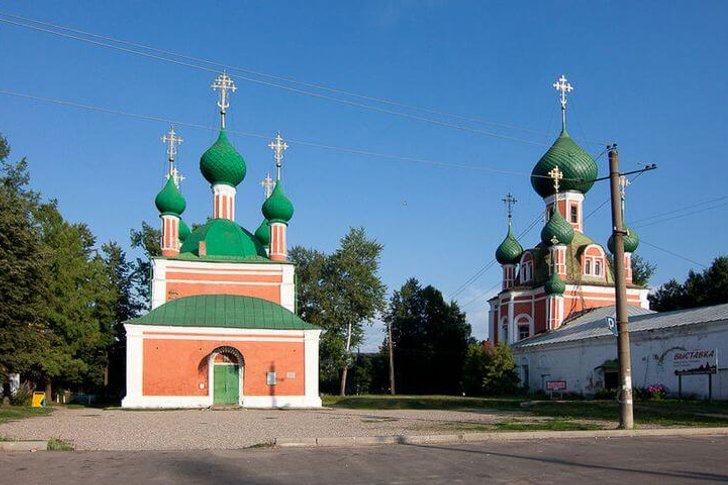
Church of Peter the Metropolitan
A tent temple of the 16th century, a rather rare monument of architecture for this area, built according to the project of an unknown author. The church has two thrones: warm and cold. Despite the restoration of the 1880s and 1970s, as a result of which the building acquired its original appearance, already in the 1990s it was in a very deplorable state. Despite the state of emergency, services are held in the temple from time to time.

Church of the Forty Martyrs
The temple stands on the shore of Lake Pleshcheyevo in Rybnaya Sloboda. It has a very picturesque, "postcard" appearance and often acts as a symbol of Pereslavl-Zalessky. The church was erected in 1755 at the expense of Moscow merchants. Today, its façade is painted a bright pink, contrasting with the blue roof, and the walls are adorned with elaborately decorated window openings. Around the building is a circular observation deck overlooking the lake.
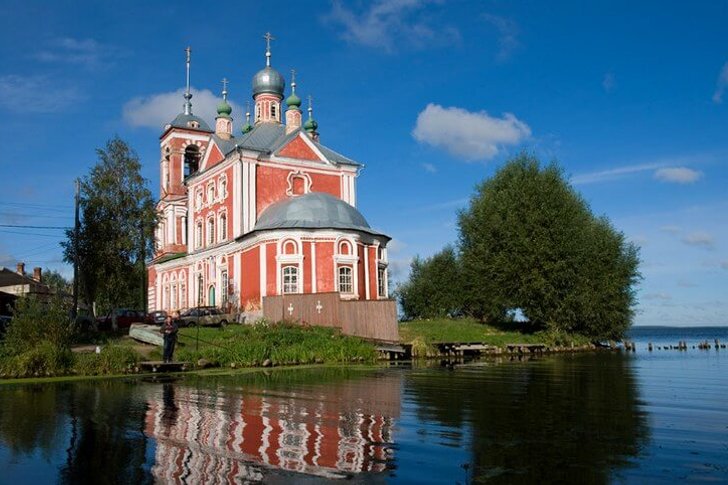
Nikolsky Monastery
Today the St. Nicholas Monastery is a female monastery, but in the 14th century it began as a male monastery. Several times it was ruined as a result of raids, but after the disaster, monastic life resumed fairly quickly. In the 1920s, the institution was closed, the main cathedral was blown up, in the rest of the premises a cattle shed, apartments and repair shops were made. In the 1990s, after the return of the Russian Orthodox Church, new sisters actually came to ruins - many churches had to be rebuilt.
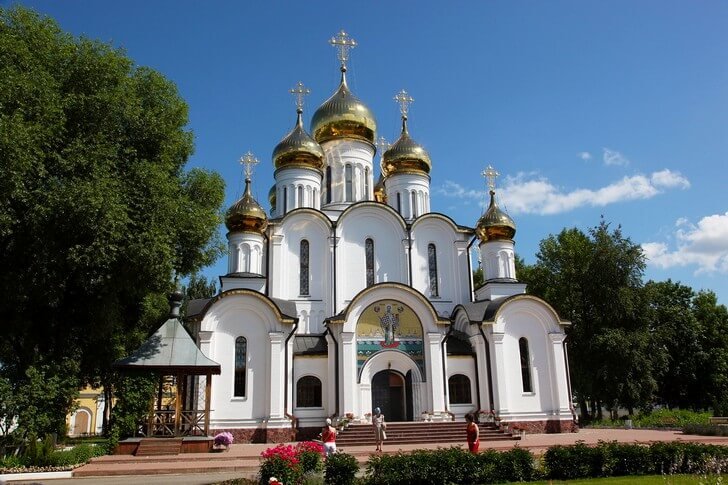
Nikitsky monastery
The monastery of the XII century is one of the most ancient in North-Eastern Rus'. It is located next to Pleshcheevo Lake. The monks themselves believe that the monastery was founded in 1010, when wooden churches appeared on the shore of the reservoir - it was they who became the first temples of the monastery. Monuments of church architecture of the 16th-19th centuries, which are part of the architectural ensemble, have survived to this day.

Holy Trinity Danilov Monastery
Another male monastery of a later period, founded by a monk of the Nikitsky Monastery. Its main temple, the Trinity Cathedral, was built in honor of the birth of the heir to the throne (the future Ivan the Terrible). In the Middle Ages, the monastery acted as a large feudal lord, it had at its disposal numerous lands and many villages with peasants. Even after the ruin during the Time of Troubles, she did not completely lose her wealth.
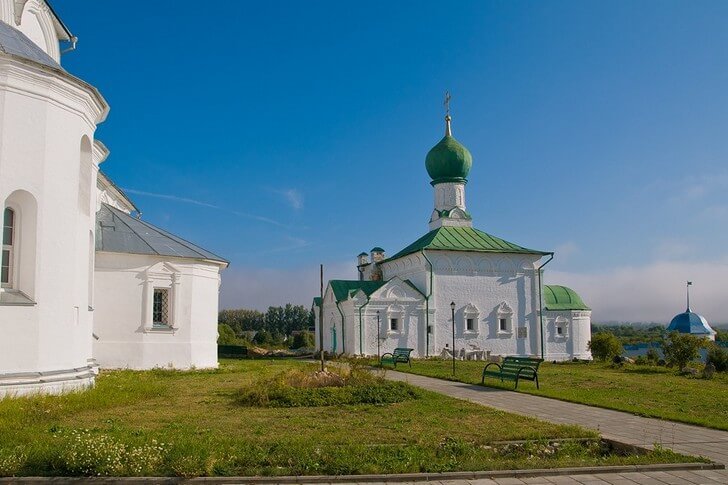
Feodorovsky Monastery
The monastery was founded in the 15th century on the site of the battle between the Moscow and Tver princes, which took place in 1304. Until the second half of the 17th century, male monks lived in the community, then the sisters settled here. At the beginning of the 20th century, 500 nuns and nuns served in the monastery, three deserts (including Alekseevskaya) were assigned to the institution. In Soviet times, the monastery actually ceased to exist, its revival took place in the 2000s.
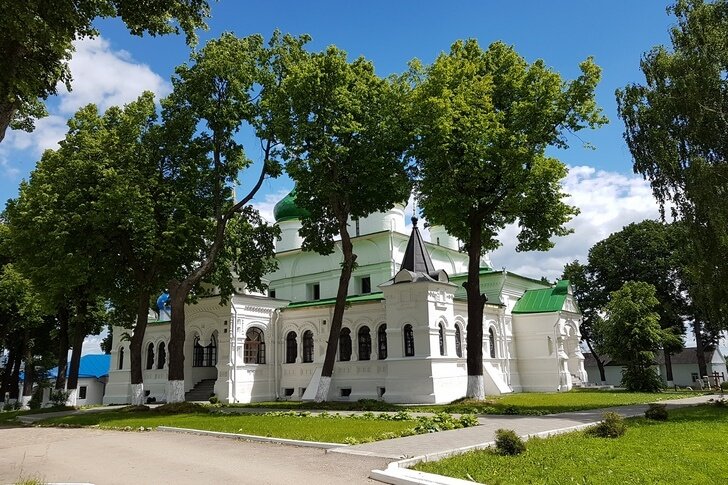
Museum-estate "Boat of Peter I"
It is generally accepted that the "Boat of Peter I" is the very first provincial museum in Russia (it was founded back in 1803). Its central exhibit is the ship (boat) "Fortune", made by Peter the Great. This is the only surviving vessel of this type. The structure of the museum includes a monument and an obelisk in honor of the first emperor, the Boat House, the White Palace, a gatehouse, a triumphal gate and a rotunda.
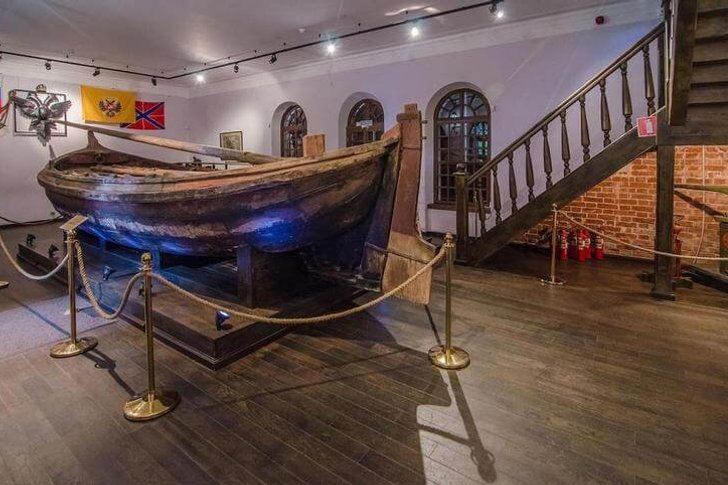
Pereslavl Railway Museum
Private exposition of railway equipment, founded in 1991. Within its framework, samples of rail transport of the 19th - first half of the 20th centuries, as well as various mechanisms and machines, one way or another connected with the railway, are collected. Many of the exhibits have been restored and are in working condition, while others require repair and restoration. In the museum you can see steam locomotives, engine locomotives, locomotives, railcars, wagons.

iron museum
The museum is a small private collection located inside an old merchant's mansion built according to a classical design: the first floor is made of stone, where a souvenir shop operates, the second is made of wood (the exposition is located here). The museum is quite popular with tourists; at least 1,000 people visit it every month. The collection consists of over 200 irons that were ironed before the age of electricity.
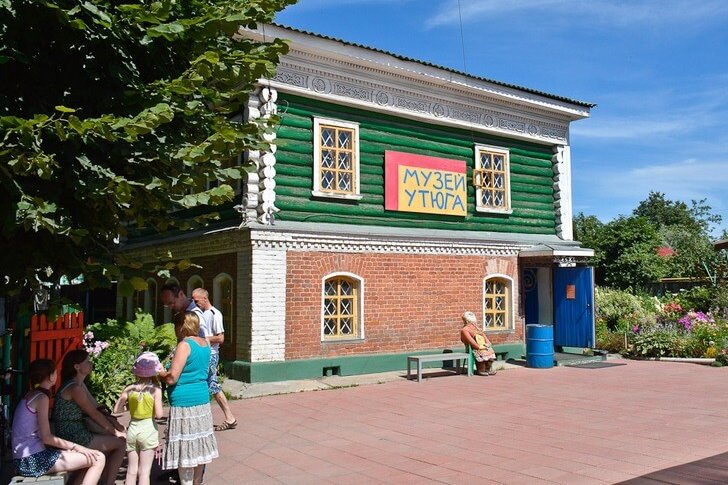
Museum "House of the teapot"
It is almost impossible to drive past the House of the Teapot, as it is painted in bright colors that instantly catch the eye of travelers. It was founded by the owners of the Iron Museum in 2003. To attract visitors, the ingenious owners came up with original inscriptions and appeals and placed them on the fence and walls. After reading one of them, it is simply impossible to ignore such an insistent invitation to enter inside.
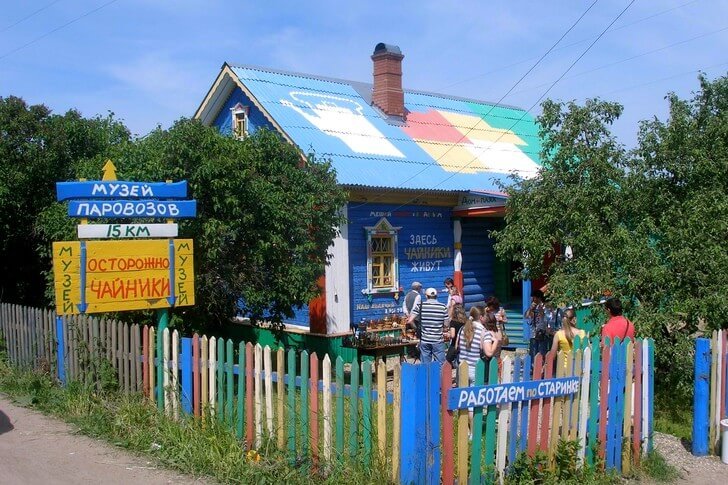
Museum of Peasant Design "Horse in a Coat"
The new museum of Pereslavl-Zalessky, which has already managed to earn high marks from visitors. Its exposition is located in two small halls and consists of items of peasant life and interior, presented from an interesting and rather non-standard side. But the main thing in this museum is the atmosphere and concept, which allows you to look at the peasant class in a completely new way and learn a lot of interesting things.
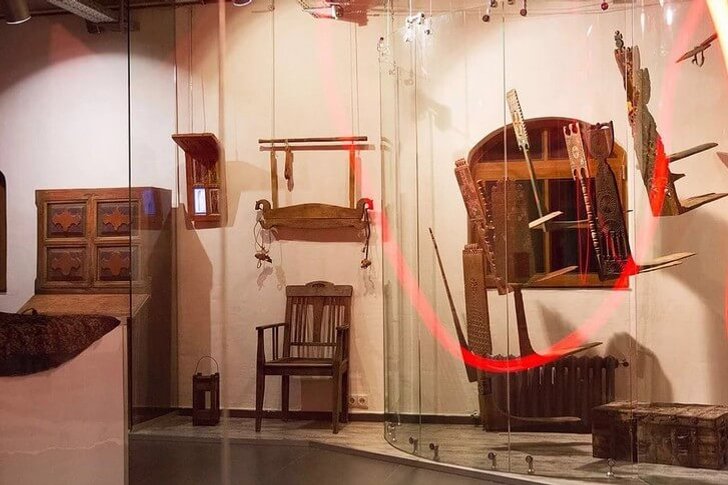
Radio Museum
Another private museum showing visitors the history and achievements of radio engineering. All of its small space is occupied by radios of various sizes and formats brought from all over the world. The founders collected the exposition literally from cellars and attics, and as a result, a rather interesting exhibition turned out. In the shop at the museum you can buy rare parts for the repair of old devices.

Museum of Old Sewing Machines
The museum and the souvenir shop are located in the same building. The exposition consists of rare sewing machines, as the name suggests. The number of exhibits is more than 100. There are antique pre-revolutionary devices, Soviet cars and products of famous world manufacturers. The shop on the ground floor sells crockery, clothing and pottery.
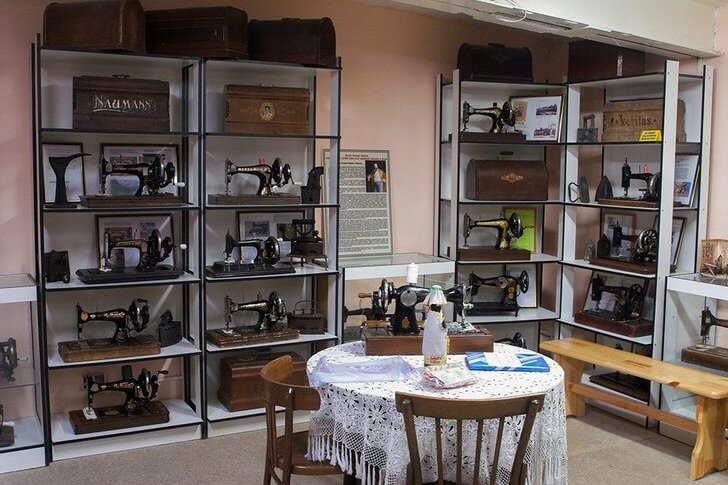
Museum of Alexander Nevsky
The facility opened in 2012. Its exposition is devoted to the period of the city's history, when Alexander Nevsky reigned there. It has no analogues in Russia. During the tour, you can see the model of Pereslavl-Zalessky of the 12th century, icons depicting the prince, awards (medals and orders) bearing the name of Alexander Nevsky, the composition “Three Warriors”, consisting of figures of a Teutonic knight, a Russian knight and a Tatar-Mongol horseman.
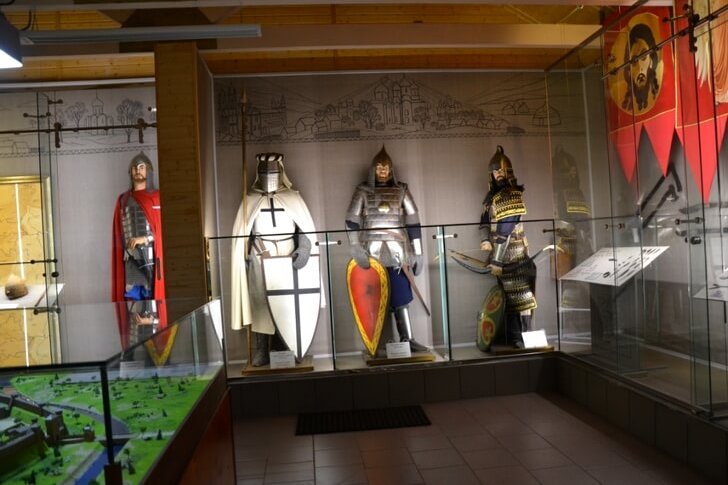
Museum of cunning and ingenuity
The original collection of the museum consists of various devices and household items invented by savvy peasants and townspeople to facilitate housekeeping. Here you can see special dishes for mustachioed men, fruit cutters, openers, pest traps and other useful little things. The work of many exhibits is allowed to be tested in practice.

"Russian Park"
Tourist complex and historical and cultural center, consisting of a Russian village with wooden houses, inside which the atmosphere and interior of the 19th - early 20th centuries are recreated. Museum expositions that tell about the inventions and discoveries made by compatriots, and thematic alleys where you can meet the heroes of folk tales. The local tavern serves traditional Russian cuisine.
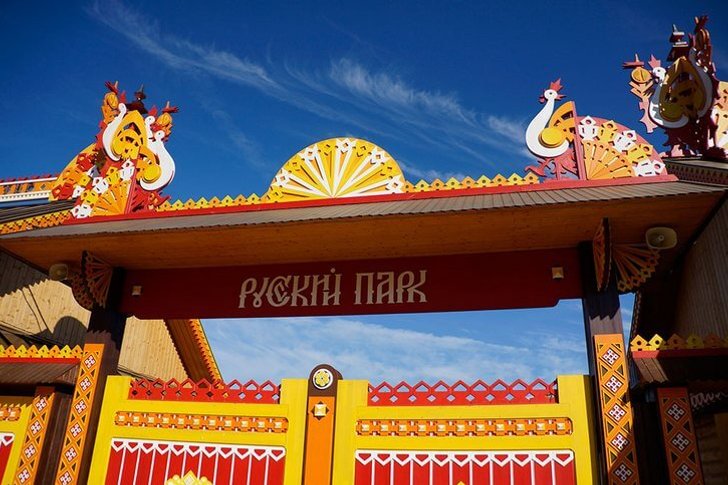
"House of Berendey"
A small museum complex that combines an exposition, a playground, an atmospheric cafe and a gift shop. During the tour, visitors are told about traditional Russian life, customs and traditions, while actively involving them in a theatrical performance. The main character of the whole action is the fabulous Berendey. Excursion programs of the museum are very diverse, you can choose any one to your taste.
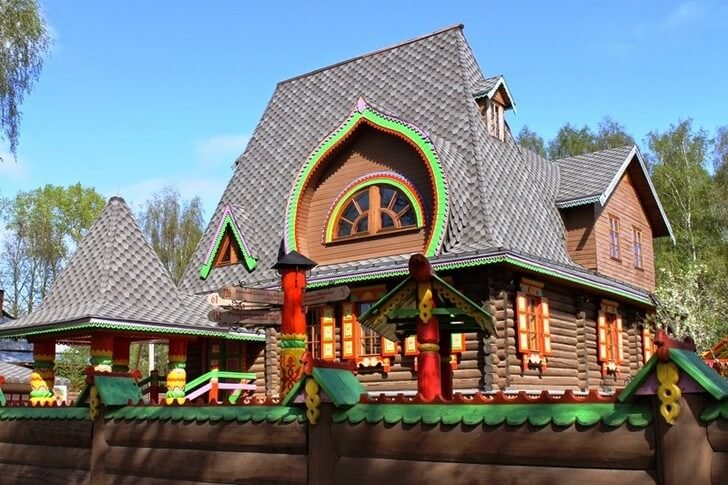
Museum "The Birth of a Fairy Tale"
The museum is located about 30 km from the city, it is part of the Far Far Away Kingdom complex. The exposition consists of characters from fairy tales, as well as from the heroes of Slavic myths, made by the local sculptor and artist A. Tikhonov. During the tour, guests enter the wonderful world of ancient legends. To enhance the effect, special music and scenery were selected.
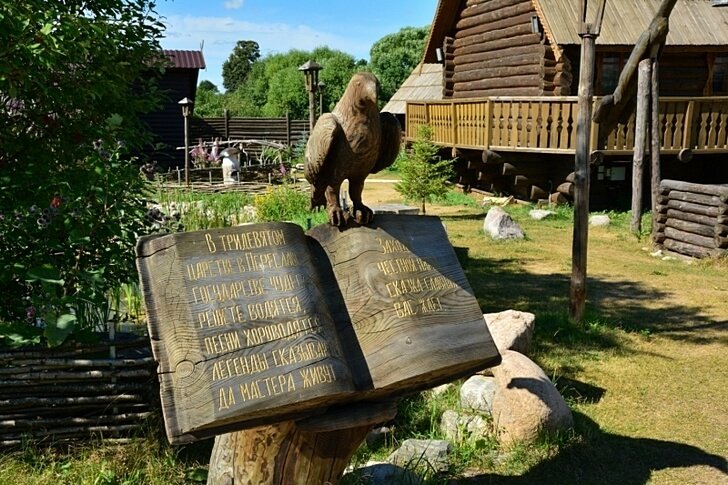
Pereslavl Dendrological Garden
The garden appeared in the 1950s, since 1998 it has been included in the Lake Pleshcheyevo National Park. Plants from different parts of Russia and the world are planted in eight zones: Crimea, the Caucasus, the Far East, Siberia, Western Europe, China, Japan, and Central Asia are represented. For visitors, walking alleys are laid between the thickets, small stone bridges are thrown over artificial reservoirs.
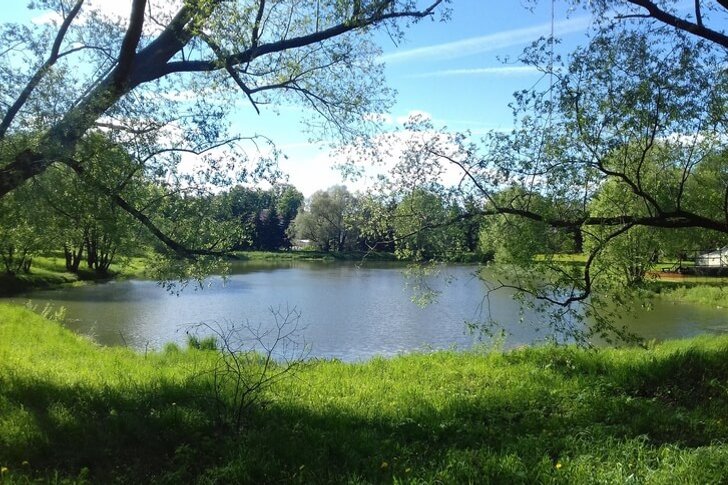
blue stone
A mysterious block, supposedly used as a ritual object back in the days of pagan Rus'. It was used in their rites by Merya and the ancient Slavs. In dry weather, the stone has a normal gray color, and during rain it turns blue. After the adoption of Christianity, the inhabitants continued to gather around the site to arrange dances and make fires, which infuriated the monks of the nearby monastery. The brothers constantly frightened people that an evil spirit lives in the Blue Stone.
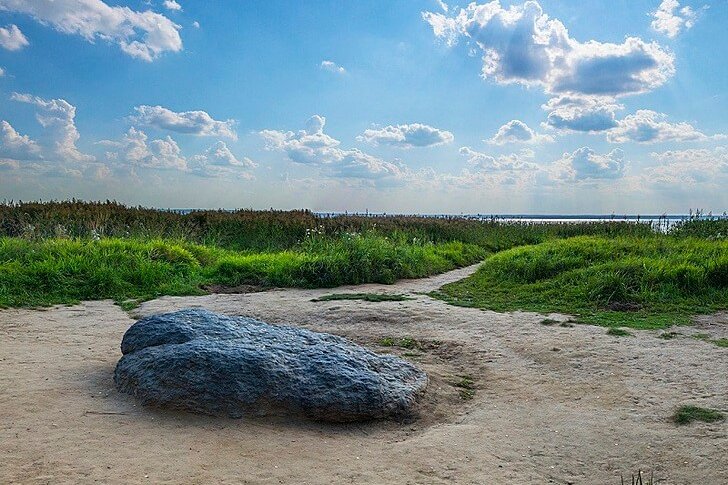
Alexandrova mountain
Alexandrova Gora is the place of settlement of the Finno-Ugric tribe Merya, who came to these places in the 7th century. Some experts believe that pagan dances and games were held here during the holidays. According to another version, it is believed that the hill was built on the orders of Alexander Nevsky. In the XIII century, the Alexander Monastery was built on the mountain, which ceased to exist after 500 years.
